25 Vintage Photos That Will Give You The Best Tour Of History
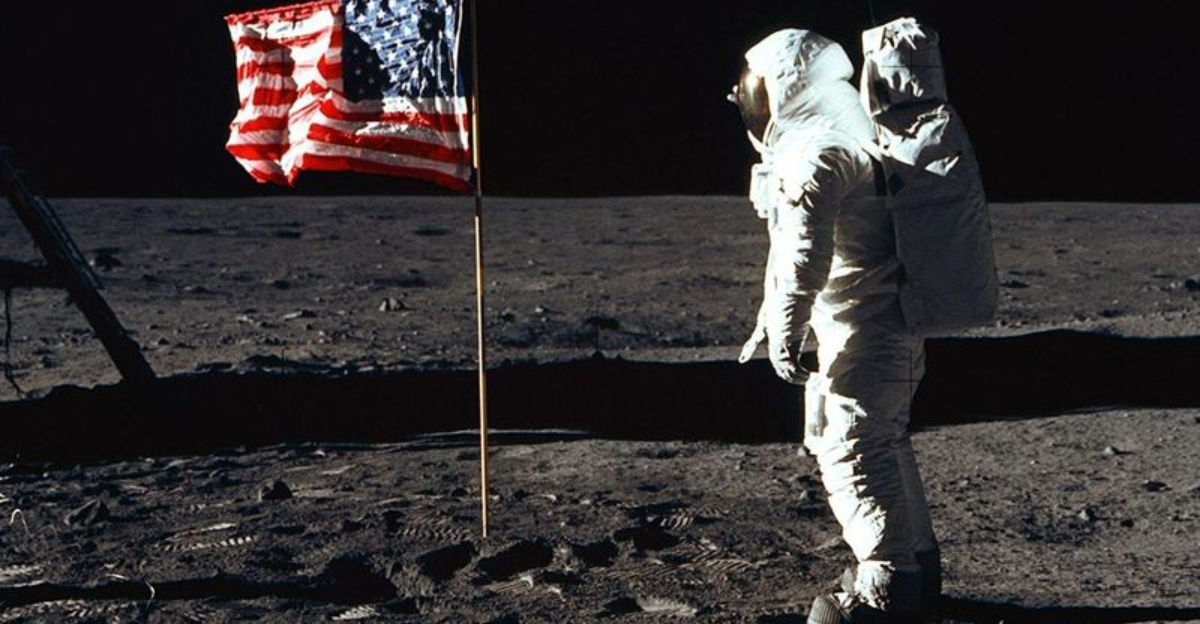
Embark on a whimsical journey through time with 25 vintage photos that don’t just capture history—they celebrate it in all its quirky, iconic glory.
From the timeless mystery of the ancient pyramids to the mind-blowing marvel of the James Webb Space Telescope, these snapshots span centuries, cultures, and hairstyles. But don’t expect a dusty old lecture—this is history served with a twist.
Think moon boots and typewriters, big ideas and bigger sideburns, moments of genius alongside glorious human weirdness. Each photo is a portal into the past, brimming with humor, heart, and a few surprises that’ll have you saying, “Wait… that happened?”
So whether it’s royalty on roller skates or scientists with questionable safety gear, these images tell stories that are equal parts fascinating and funny. Buckle up for a tour of humanity that proves the past isn’t just worth remembering—it’s worth smiling about, too. Let’s dive into history, one snapshot at a time.
1. The Pyramids Were Built
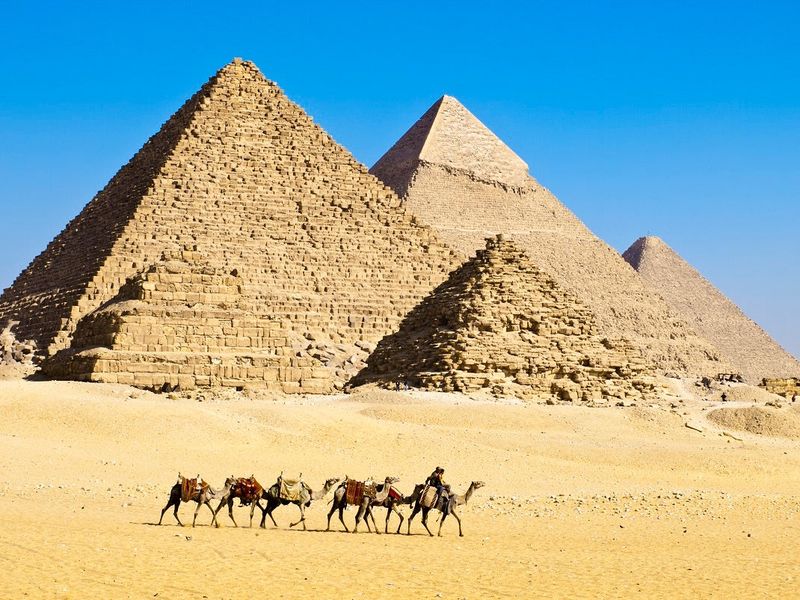
In the dusty heat of ancient Egypt, a colossal endeavor took shape—pyramids! These geometric marvels were born around 2600 BCE, crafted from millions of stones stacked with precision that baffles even modern engineers. Folks back then sported not a single power tool, yet their handiwork has stood the test of time. Imagine the sweat and toil as workers, perhaps donning loincloths and sun hats, heaved these enormous blocks into place. It’s a mystery wrapped in a riddle, with a dash of ancient sweat.
Theories abound about how these impressive tombs of the pharaohs were constructed. Some say ramps, while others whisper about alien assistance. True or not, the pyramids remain a testament to human ingenuity—or perhaps our stubbornness. I remember visiting these majestic structures, feeling like an ant in a giant’s playground, humbled by history.
As I squinted up at the towering stones, the scale of human ambition was undeniable. How did they pull it off without cranes or forklifts? The Pyramids are an everlasting enigma, a real-life puzzle with missing pieces that invites endless curiosity and awe.
2. Julius Caesar Was Assassinated

Beware the Ides of March—or so the saying goes, thanks to Julius Caesar’s infamous demise in 44 BCE. Picture it: a regular day in Rome turned into a classic soap opera, but with more togas and less commercial breaks. Caesar, the man who expanded the Roman Empire and redefined leadership, met his end in the most dramatic fashion. Betrayed by a group of senators, including his friend Brutus—et tu, indeed!—Caesar’s assassination was a real-life plot twist nobody saw coming.
History lessons in school never quite captured the intensity of that fateful day. I recall doodling in the margins of my notebook, imagining the scene more vividly than any textbook could convey. It was Shakespeare meets Game of Thrones, all wrapped up in a toga.
The aftermath of Caesar’s assassination was as chaotic as a Roman chariot race, setting off a chain of events that changed the course of Roman history forever. Those steely senators probably didn’t realize their actions would echo through the ages, etching Caesar’s name in the annals of history. A tale of power, betrayal, and drama that continues to captivate imaginations worldwide.
3. The Black Death Ravaged Europe
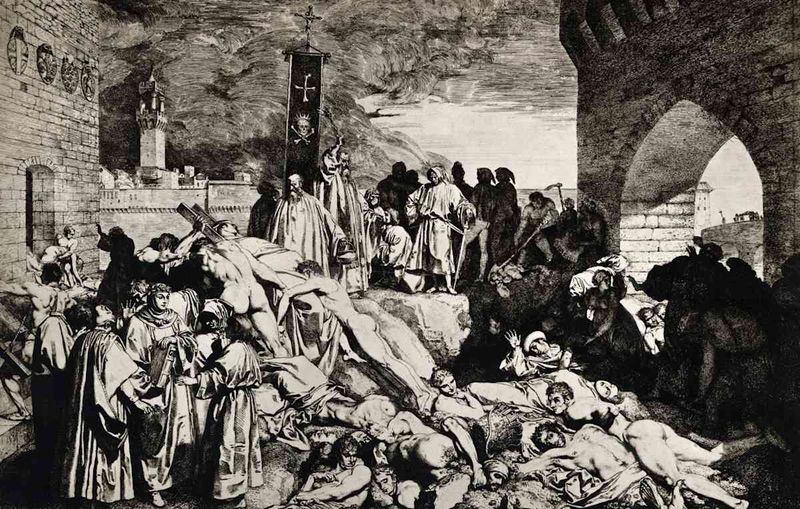
When life gives you fleas, apparently it gives you the Black Death. Europe in the mid-14th century was a place where a tiny flea could bring down entire populations. The Black Death, as it came to be known, swept through the continent like an unwelcome houseguest who refused to leave. Between 1347 and 1351, it wiped out a third of Europe’s population, leaving towns ghostly and silent.
The plague arrived like a thief in the night—no text warnings, just silent devastation. Personal space and handwashing became survival tactics rather than polite suggestions. The medieval streets, once bustling with markets and merriment, turned somber as the reality of the plague set in.
I often think about how those resilient folks coped back then, without the modern comforts we take for granted. It makes today’s hand sanitizers and social distancing feel like a breeze in comparison. The Black Death was a stern reminder of nature’s relentless power, which even medieval Europe’s strongest castles couldn’t keep at bay. It’s history’s grim way of saying, “Hey, wash your hands!”
4. Gutenberg Invented the Printing Press
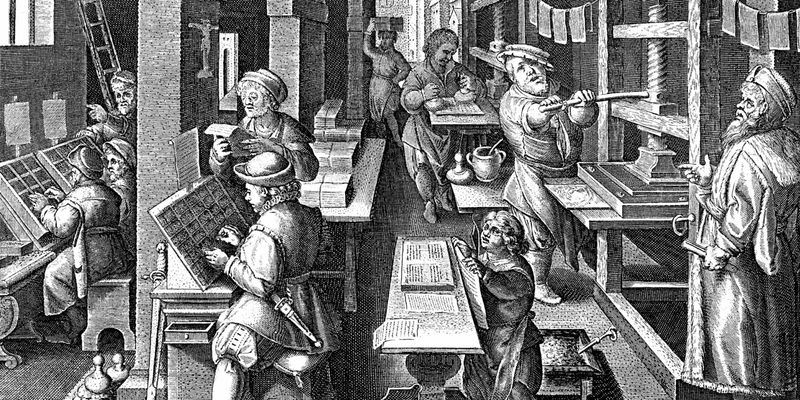
What do you get when you mix ink, paper, and a brilliant mind? Johannes Gutenberg’s printing press, of course! In the 1440s, this innovative contraption revolutionized the way information was shared, turning the tide of communication forever. Think of it as the TikTok of its time—suddenly, ideas could go viral, but with significantly fewer dance challenges.
Gutenberg’s invention was like unleashing a tidal wave of knowledge upon a thirsty world. Books that once took weeks to transcribe by hand could now be printed swiftly, making literature accessible to the masses. Imagine the excitement of owning a book, once a luxury reserved for the elite.
In today’s digital age, we might take printed words for granted, but back then, the printing press was nothing short of magical. Gutenberg’s creation laid the foundation for the Renaissance, the Reformation, and the Scientific Revolution—essentially a domino effect of enlightenment. It’s a reminder of how one innovation can spark a cascade of change, proving that the pen truly is mightier than the sword.
5. Columbus “Sailed the Ocean Blue”
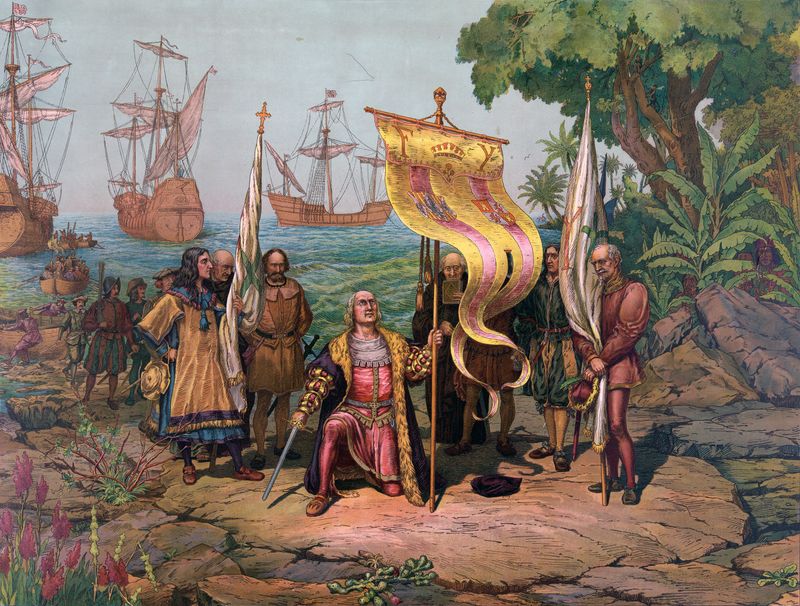
Picture this: It’s 1492, and Christopher Columbus, armed with bravado and a questionable map, sets sail into the unknown. The ocean blue awaited, shimmering with potential and mystery. Columbus’s voyage was less of a direct route and more of a fortuitous detour, accidentally bumping into an entire continent and forever altering history.
Columbus’s journey was the 15th-century equivalent of taking the scenic route, with a side order of discovery. Sure, he was looking for a shortcut to Asia, but sometimes the best discoveries happen when you least expect them. The Americas became the unexpected plot twist in Columbus’s nautical adventure, proving that sometimes, getting lost is the best way to find something truly remarkable.
I can’t help but chuckle at the thought of Columbus’s crew, realizing the world was a bit bigger than they imagined. It’s a tale of exploration, audacity, and a reminder that the world is full of surprises. Columbus’s journey teaches us to embrace the unexpected and keep our sails open to new possibilities, even when the destination isn’t what we planned.
6. The American Declaration of Independence Was Signed
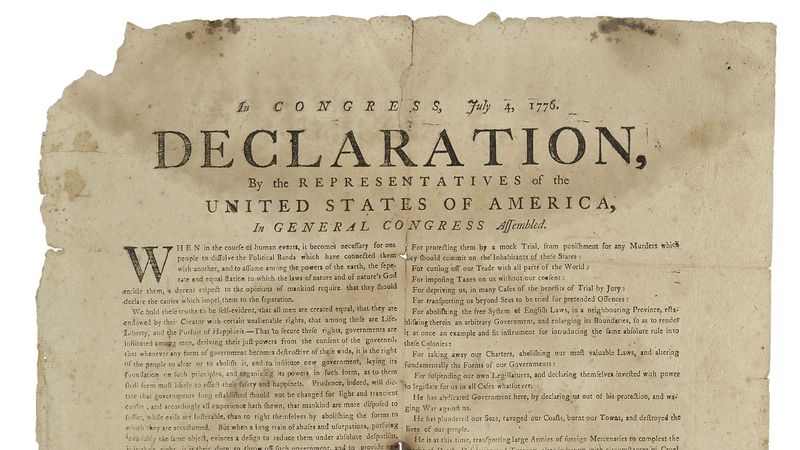
Dear Britain, we need to talk. That was essentially the sentiment of the American Declaration of Independence in 1776. Imagine a group of determined colonists, armed with quills and conviction, breaking up with the British Empire. It was the ultimate declaration of freedom, with a side of fireworks and powdered wigs.
The signing of the Declaration was like sending a strongly-worded letter to a clingy ex, officially saying, “We’re done here.” It wasn’t just about taxation without representation; it was about carving out a new identity, one ink stroke at a time. The Founding Fathers gathered in Philadelphia, each signature a nod to a future filled with liberty.
I often wonder what it was like in Independence Hall, amidst the buzz of revolution and the scent of fresh parchment. It was a moment that redefined a nation, setting the stage for a new chapter in history. The Declaration of Independence is more than a document; it’s a testament to the power of words and the courage to stand up for what you believe in.
7. The French Revolution Exploded
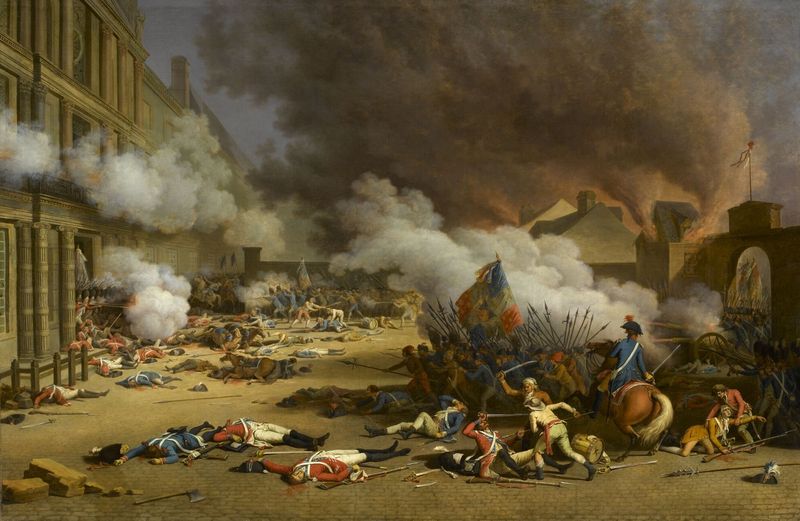
Heads up, or rather, heads off! The French Revolution of 1789 was a time when liberty, equality, and fraternity decided to shake things up—quite literally. Picture a nation where the guillotine was the most talked-about accessory. The revolution was like fireworks and feuds rolled into one, sparking a new era for France.
The storming of the Bastille marked the beginning of this tumultuous chapter, as citizens fueled by ideals and a dash of indignation took a stand. The revolution was more than just a change in government; it was a fundamental shift in societal values, demanding justice and equality.
I imagine the streets of Paris, echoing with cries for change and the clattering of cobblestones underfoot. It was a whirlwind of passion and politics, where the old order toppled and a new dawn rose. The French Revolution reminds us that even in chaos, there’s a chance for rebirth and renewal, proving that sometimes, you have to break a few eggs to make a revolutionary omelet.
8. The First Steam Engine Locomotive Chugged to Life

All aboard the train to the future! In 1804, the first steam locomotive chugged to life, signaling a new era of travel and industry. Imagine the thrill of seeing a hefty contraption roar to life, belching steam and promising to whisk you away at a speed that felt like lightning.
The locomotive was more than just a new mode of transport; it was a symbol of human ingenuity and the drive to connect distant places. Suddenly, the world felt a bit smaller as tracks linked cities and towns, ushering in the Industrial Revolution and changing the landscape forever.
I can almost hear the clattering of wheels on tracks and the whistle piercing the air, a sound that heralded progress and adventure. The steam engine locomotive was a game-changer, proving that with enough determination and a sprinkle of audacity, humans could move mountains—or at least travel over them. It’s a reminder of the power of innovation and the limitless possibilities of human ambition.
9. The Civil War Rocked the U.S.
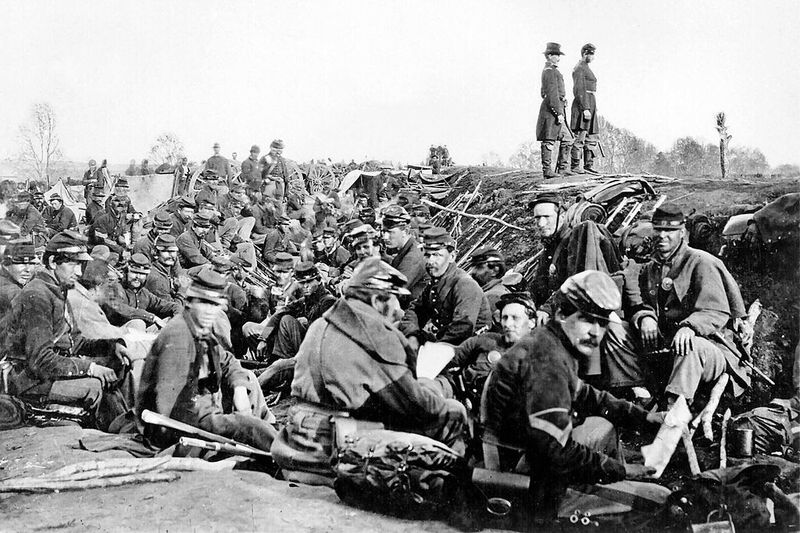
The United States Civil War from 1861 to 1865 was a time when the nation found itself embroiled in a conflict that tested its very soul. It was a battle over freedom, unity, and the future of a divided nation. Imagine a country tearing at the seams, with brother fighting brother and a nation grappling with its identity.
The Civil War was a tumultuous chapter in American history, fueled by ideals and a desperate hope for reconciliation. It was more than just a fight over territories; it was about defining the values that would shape the United States for generations to come.
The echoes of cannon fire and the somber notes of bugles still linger in the annals of history, reminding us of the cost of conflict and the strength of a nation’s resolve. The Civil War was a brutal reminder that freedom comes at a price, but it also paved the way for a more united and just society, proving that even in the darkest times, hope can emerge.
10. Lincoln Was Assassinated
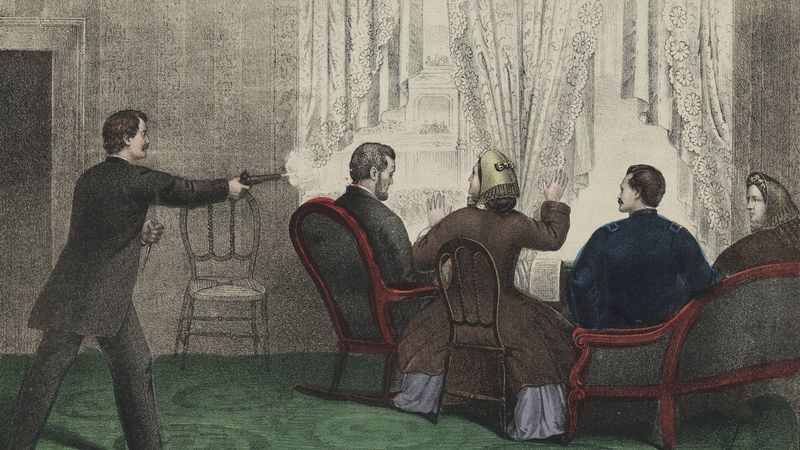
On April 14, 1865, the curtains closed on one of America’s most iconic leaders—Abraham Lincoln. The theater, a place of laughter and drama, became the backdrop for a national tragedy that shook the United States to its core. Lincoln’s assassination was more than a loss; it was a turning point that left the nation grappling with sorrow and uncertainty.
Ford’s Theatre, usually a haven of entertainment, became the stage for an unspeakable act that altered history. Lincoln’s leadership during the Civil War had been a beacon of hope, and his death felt like the snuffing of a guiding light.
I think of the gasps from the audience, the shock reverberating through the theater, as confusion turned to grief. Lincoln’s assassination was a moment that tested the resilience of a nation, a reminder of the fragility of life and the enduring impact of a true leader. It was a moment when the nation’s heart skipped a beat, leaving an indelible mark on history.
11. The Light Bulb Was Invented

Eureka! In 1879, Thomas Edison lit up the world—literally. The invention of the light bulb was like flipping a switch on human progress, casting a warm glow over a future filled with possibilities. Edison’s light bulb illuminated more than just rooms; it sparked a revolution in how we live, work, and play.
Before Edison, nightfall meant candles or early bedtime, but with the light bulb, the world came alive after dark. It was a beacon of innovation, proving that with enough persistence and a trail of failed experiments, success can shine brightly.
I imagine Edison in his lab, surrounded by tangles of wires and bulbs, chasing the flicker of inspiration. The light bulb was more than just an invention; it was a symbol of human ingenuity and the power of imagination. Edison’s legacy reminds us that even the smallest filament can illuminate the path to greatness.
12. The Wright Brothers Took Flight
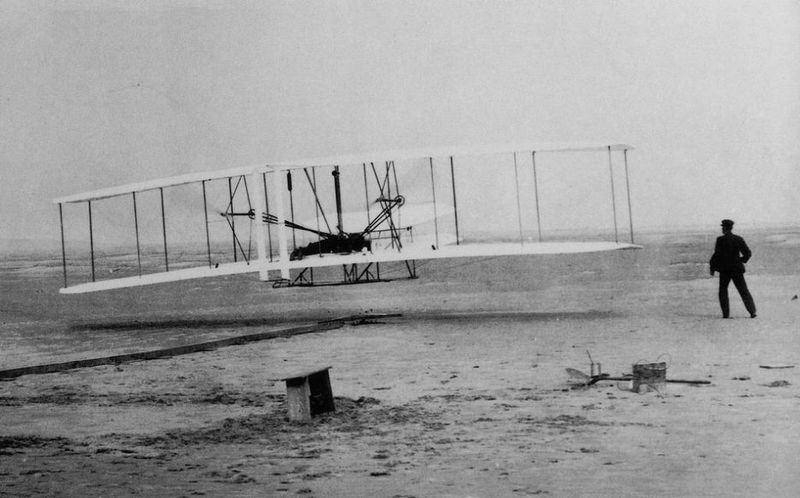
Hold on to your hats—because in 1903, Wilbur and Orville Wright took to the skies and changed the world forever. The brothers, with their bicycle shop expertise and a dream as vast as the sky, made aviation history with a 12-second flight that proved humans could soar.
The Wright brothers’ journey was one of trial, error, and a whole lot of perseverance. Their airplane, crafted with care and a touch of whimsy, opened up a new frontier, transforming travel and shrinking the world in ways previously unimaginable.
I picture the awe of onlookers at Kitty Hawk, their eyes wide as the contraption lifted off the ground. The Wright brothers’ flight was more than just a technological marvel; it was a testament to human ambition and the relentless pursuit of dreams. It’s a reminder that with a bit of innovation and a lot of courage, the sky isn’t the limit—it’s just the beginning.
13. Titanic Sank
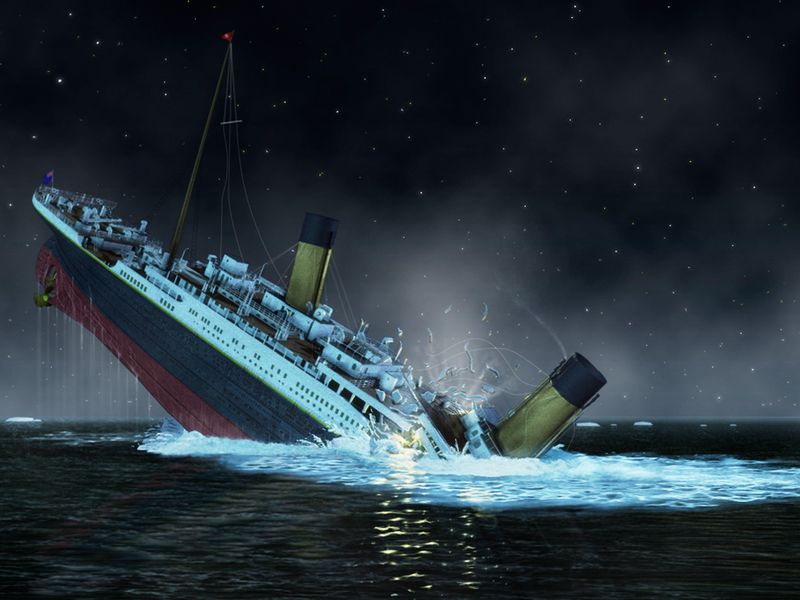
The unsinkable ship that sank—Titanic’s tale is a haunting reminder of human hubris. On April 15, 1912, the RMS Titanic met its icy fate in the Atlantic Ocean, a tragic end to its maiden voyage that left an indelible mark on maritime history.
The Titanic was a marvel of luxury and engineering, but even its grandeur couldn’t withstand nature’s cold embrace. The iceberg loomed large in history’s rearview mirror, a chilling lesson that even the mightiest can fall.
As I think of the passengers, clad in their finest, with dreams of new horizons, it’s a poignant reminder of life’s fragility. The Titanic’s sinking was a turning point in maritime safety, prompting changes that continue to protect sailors today. It’s a story of tragedy, resilience, and the enduring spirit of those who dare to dream at sea.
14. Women Gained the Right to Vote in the U.S.
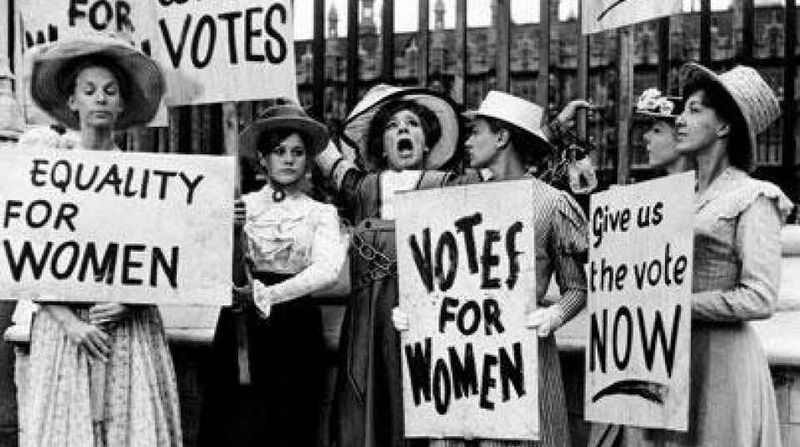
It’s about time! In 1920, after decades of struggle and perseverance, women in the United States finally gained the right to vote. The 19th Amendment was a monumental stride toward equality, fueled by the tireless efforts of suffragettes who believed in a future where every voice mattered.
The journey to suffrage was anything but easy, marked by marches, protests, and unwavering determination. These trailblazing women, armed with banners and undaunted spirit, paved the way for future generations to engage in democratic processes.
I picture the jubilation and tears of joy as women cast their votes for the first time, a tangible affirmation of their place in society. The suffragettes’ victory was more than a political milestone; it was a testament to the power of collective action and the relentless pursuit of justice. It’s a reminder that change is possible, and every vote carries the weight of history.
15. The Stock Market Crashed
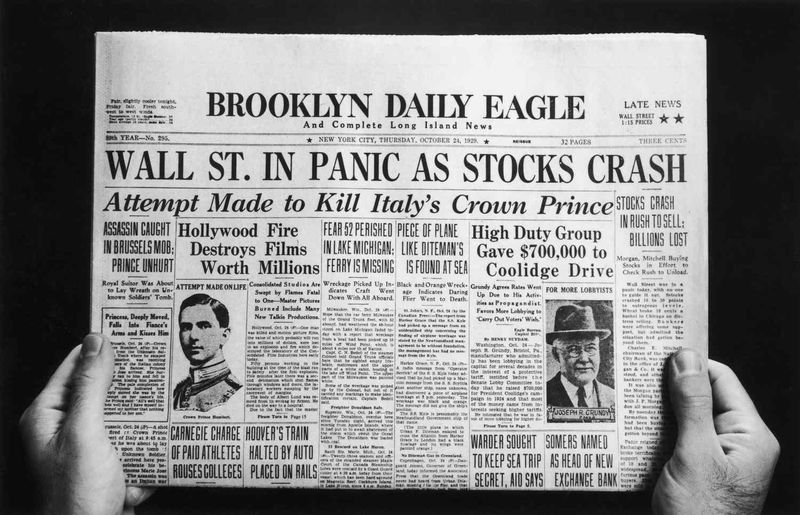
When the stock market crashed in 1929, it was like the financial world decided to take a nosedive—and it brought everyone along for the ride. The Great Depression followed, casting a long shadow over the 1930s as people traded stocks for survival.
The crash was a wake-up call for the excess and risk of the roaring twenties. Suddenly, fortunes vanished, and the bustling streets of Wall Street were replaced by queues for bread and soup kitchens. It’s the story of a nation brought to its knees, learning to rebuild from the rubble of economic despair.
I envision the panic on the trading floors, the frenzy of numbers and the clamor of voices, as dreams crumbled like ticker tape in the wind. The stock market crash was a harsh lesson in financial wisdom, echoing through time as a reminder to tread carefully when the stakes are high. It’s a testament to resilience, proving that even in the bleakest times, recovery is possible.
16. World War II Raged
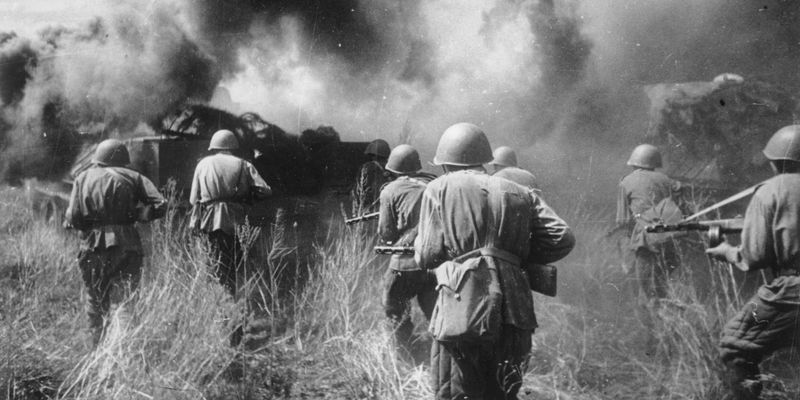
World War II was the ultimate high-stakes showdown, a global battle of good versus evil that raged from 1939 to 1945. With atomic bombs, the Holocaust, and untold devastation, it was a conflict that reshaped the world and left scars that endure to this day.
The war was a time of heroes and heartbreak, where nations came together to fight tyranny and oppression. It was a test of human spirit and resilience, proving that even in the darkest hours, courage and hope can prevail.
I think of the countless stories of bravery, sacrifice, and survival that emerged from the ashes of war. World War II was more than just a military conflict; it was a turning point that redefined global politics and human rights. It’s a powerful reminder of the cost of freedom and the enduring quest for peace.
17. Martin Luther King Jr. Delivered “I Have a Dream”
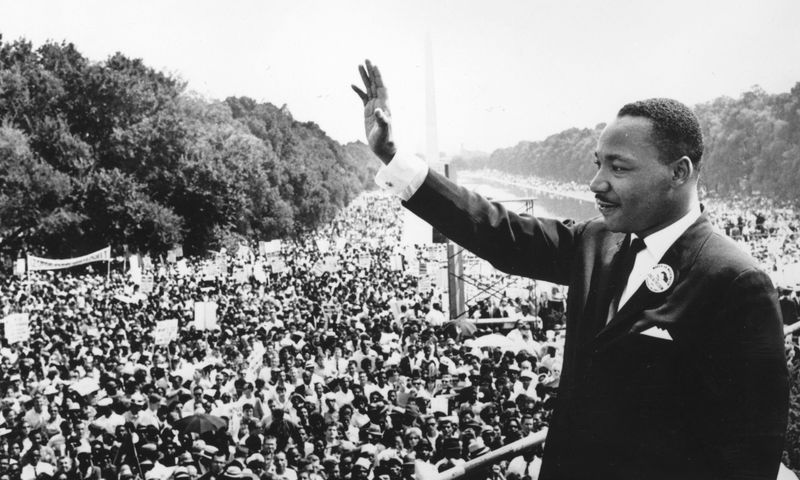
On August 28, 1963, Martin Luther King Jr. stood on the steps of the Lincoln Memorial and delivered a speech that echoed across the generations. His words—”I have a dream”—were a clarion call for equality and justice, resonating in the hearts and minds of millions.
Dr. King’s speech was more than just eloquence; it was a rallying cry for a nation divided by race and prejudice. His vision of a future where people are judged by the content of their character, not the color of their skin, remains a cornerstone of the civil rights movement.
I picture the thousands gathered, their hopes and dreams mingling with the summer breeze, as Dr. King’s voice rang out with conviction and grace. His speech was a pivotal moment in American history, a testament to the power of words to inspire change and unite people in a common cause. It’s a reminder that dreams, no matter how big, can shape the course of history.
18. The Moon Landing Happened
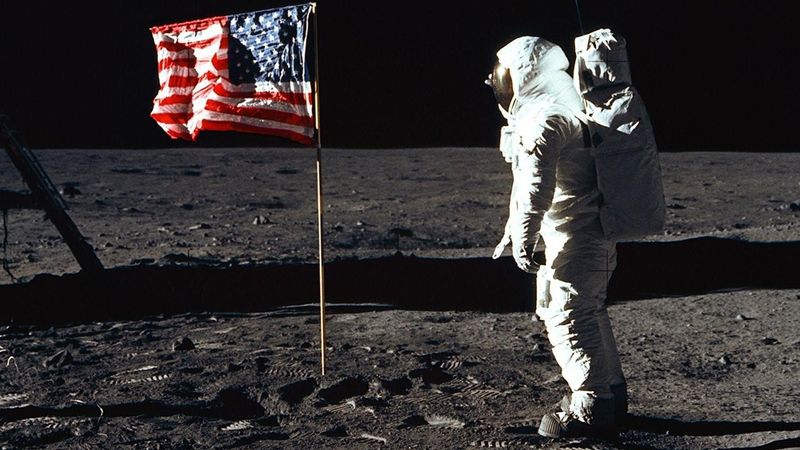
Houston, we have a footprint! In 1969, the world watched in awe as Neil Armstrong took that historic first step on the moon, uttering the famous words, “One small step for man, one giant leap for mankind.” The moon landing was a monumental achievement, a testament to human ingenuity and the spirit of exploration.
The Apollo 11 mission was a daring adventure, pushing the boundaries of technology and imagination. It was a moment that united the world in wonder, as people gazed skyward, dreaming of possibilities beyond the stars.
I imagine the thrill and trepidation of those astronauts, venturing into the unknown, fueled by curiosity and a quest for knowledge. The moon landing was more than a scientific triumph; it was a symbol of humanity’s potential to reach for the impossible and succeed. It’s a reminder that when we aim for the moon, we might just land among the stars.
19. The Berlin Wall Fell
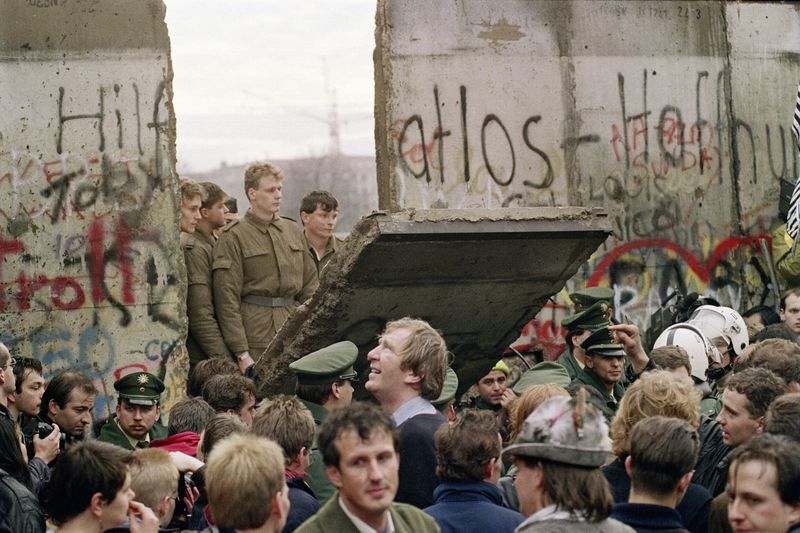
On November 9, 1989, the Berlin Wall came tumbling down, and with it, the barriers that divided East and West Germany. It was a moment of jubilation and relief, as Cold War tensions crumbled along with the concrete.
The Berlin Wall, once a symbol of division and oppression, became the backdrop for a new era of unity and hope. As the wall fell, families and friends, separated for decades, embraced once more.
I picture the jubilant crowds, sledgehammers in hand, chipping away at the wall that had long stood as a monument to division. The fall of the Berlin Wall was a turning point in history, a triumph of human spirit over adversity, and a reminder that walls—both physical and ideological—can be torn down.
20. Nelson Mandela Was Freed After 27 Years
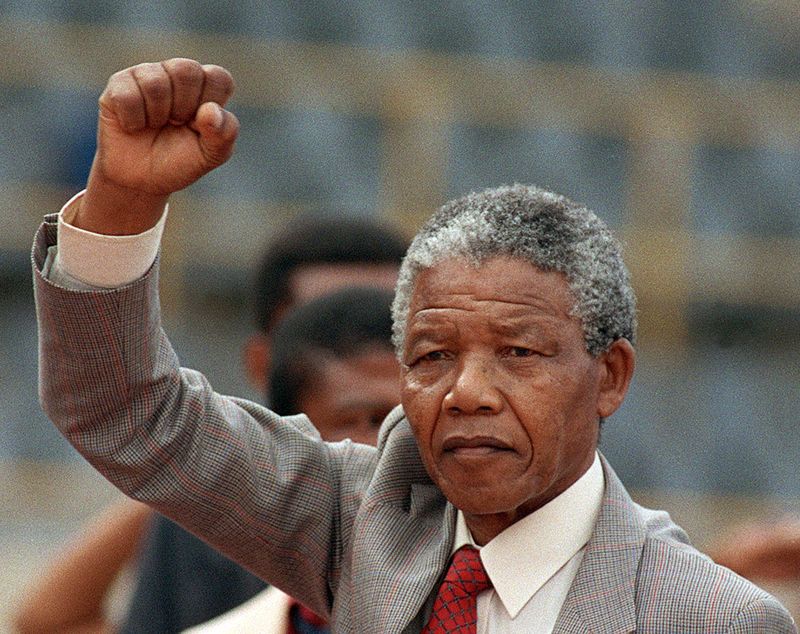
On February 11, 1990, Nelson Mandela walked out of Victor Verster Prison, a free man after 27 years of incarceration. His liberation was a beacon of hope for South Africa and the world, signaling a new chapter in the fight against apartheid.
Mandela’s release was more than just a personal victory; it was a pivotal moment for a nation on the brink of transformation. His unwavering spirit and commitment to justice inspired generations, proving that even the darkest days can give way to light.
I think of the joy and anticipation that filled the air as Mandela, with his characteristic grace and dignity, stepped into a world eager for change. His freedom was a testament to the power of resilience and forgiveness, a reminder that peace and reconciliation are always worth pursuing.
21. The Internet Went Public
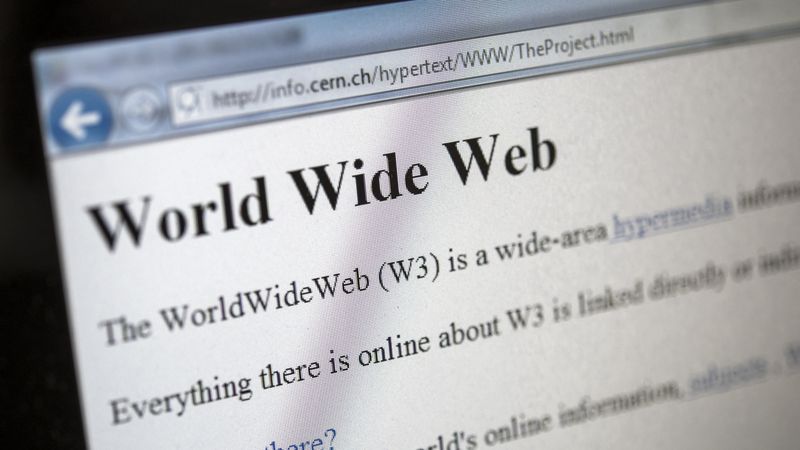
Welcome to the information superhighway! In 1991, the internet went public, and suddenly, the whole world was in your living room. It was a revolution in connectivity, transforming how we communicate, work, and play.
The internet’s debut was like opening a digital Pandora’s box, unleashing a torrent of information and opportunities. From cat videos to online shopping, the world was forever changed by the click of a mouse.
I remember the screeching sound of dial-up modems, a symphony of connectivity that signaled new horizons. The internet’s launch was a turning point, paving the way for a digital age where information is at our fingertips and the world is just a click away. It’s a testament to the power of technology to bridge gaps and bring people together.
22. 9/11 Changed Everything
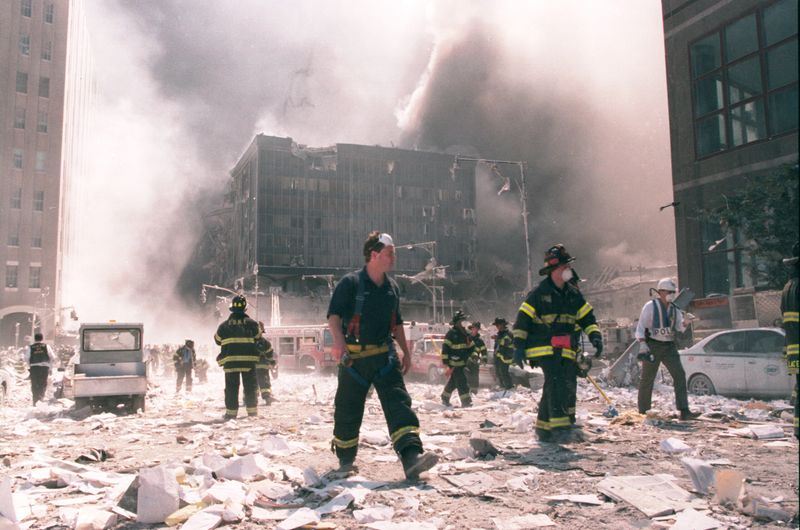
September 11, 2001, was a day that shattered innocence and reshaped global politics. The attacks on the Twin Towers in New York City were a devastating blow, leaving a scar that altered the course of history.
9/11 was more than an attack; it was a moment that redefined security and the way we view the world. The aftermath saw nations coming together to combat terrorism and protect freedom.
I remember the images of smoke billowing from the towers, the confusion and heartache that followed. It was a reminder of the fragility of life and the strength of global unity in the face of adversity. 9/11 changed everything, but it also showed the world’s capacity for resilience and compassion.
23. Barack Obama Was Elected President
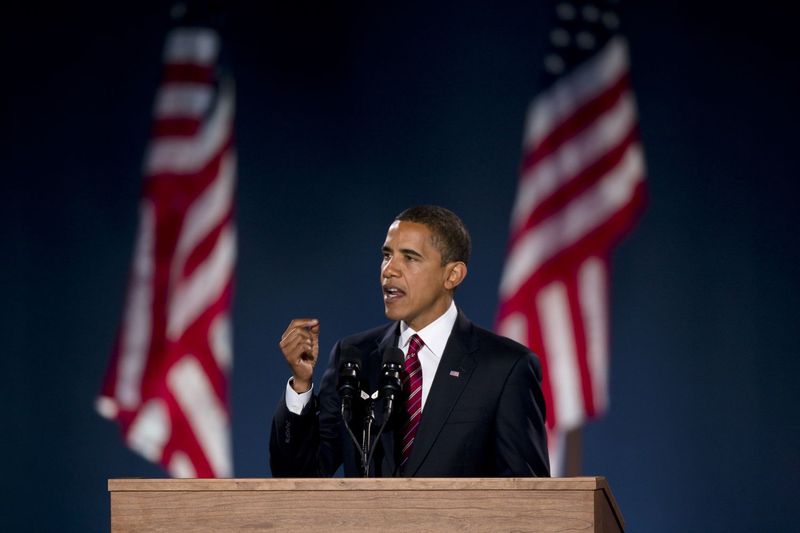
Yes, we can! In 2008, Barack Obama was elected as the first African American President of the United States, a seismic shift in American history. His election was a moment of hope and change, proving that dreams really can cast ballots.
Obama’s presidency was more than just a political milestone; it was a testament to the power of democracy and the promise of a more inclusive future. His vision for change inspired millions, igniting a movement that resonated both nationally and globally.
I think of the electrifying energy of his victory speech, the sense of possibility and unity that filled the air. Obama’s election was a beacon of progress, a reminder that in a world of challenges, hope and perseverance can indeed bring about change.
24. COVID-19 Pandemic Rocked the Planet

In 2020, the world hit pause as COVID-19 swept across the globe, bringing with it a new normal of lockdowns, Zoom calls, and toilet paper shortages. It was a year that forced us to rethink everything, from daily routines to global health priorities.
The pandemic was a stark reminder of our interconnectedness and the fragility of life. It was a time of resilience, adaptation, and finding hope amidst uncertainty.
I recall the surreal quiet of city streets and the unity in shared challenges. COVID-19 was a wake-up call, prompting innovation and collaboration in ways never seen before. It’s a testament to human spirit, proving that even in isolation, we’re never truly alone.
25. The James Webb Space Telescope Launched
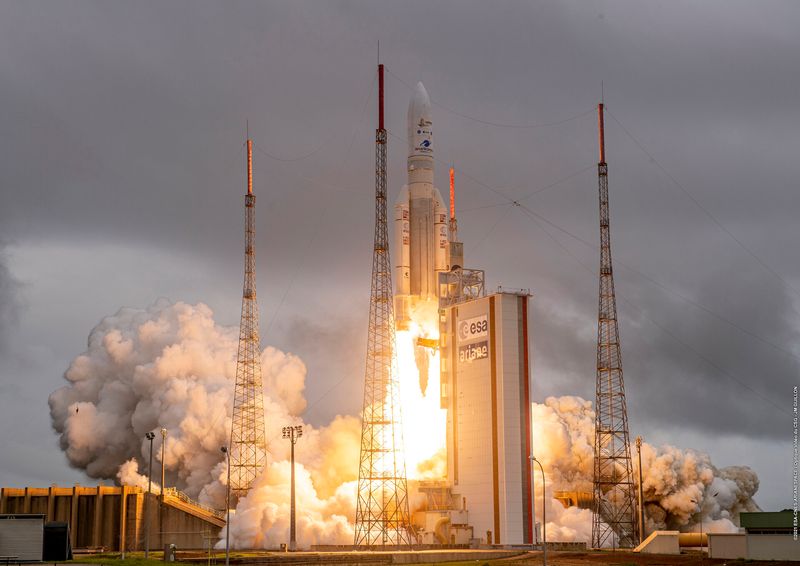
Reach for the stars! In 2021, the James Webb Space Telescope launched, setting its sights on the farthest corners of the universe. It was a leap into the unknown, promising insights into our cosmic origins.
The telescope’s launch was a monumental achievement, a testament to human curiosity and the pursuit of knowledge. With its advanced technology, it promises to unravel the mysteries of space and time.
I imagine the excitement of scientists and dreamers, watching as the telescope soared into the cosmos. The James Webb Space Telescope is more than just a scientific instrument; it’s a symbol of humanity’s endless quest for exploration and understanding.
